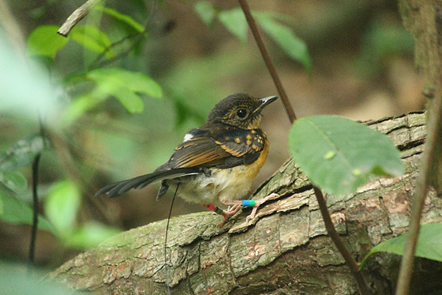
Nesting close to a roadway gives tropical birds an advantage
A growing collection of research demonstrates that birds in temperate regions have lower reproductive success when they dwell close to busy roads and highways. On the other hand, experts have recently discovered that birds in tropical regions have more breeding and nesting success in closer proximity to roads.
While some predators gravitate toward habitat edges in temperate regions, this may not be the case in the tropics. A research team led by Rongrong Angkaew of King Mongkut’s University of Technology Thonburi set up 100 nesting boxes for the White-rumped Shama in the forest interior, and placed another 100 boxes near a road close to an environmental research station in northeastern Thailand.
The researchers monitored the nests and used GPS devices to track 25 fledglings from each site for seven weeks. The study revealed that nest success was 12 percent higher and post-fledging survival was 24 percent higher at the edge of the forest compared to the interior. This is the opposite of patterns that are commonly observed in temperate regions.
“There were some special challenges involved in carrying out the field work,” said Angkaew. “When we started setting up the nest boxes in the field, we found a lot of tracks and other signs of poachers and illegal hunting, so we had to avoid some parts of the forest edge in order to reduce human disturbance to our nest boxes, which could have affected nestling and fledgling survival rates.”
All of the fledgling deaths in the study were caused by predators, as well as 94 percent of nest failures. The experts also found that fledglings preferred to spend time in dense habitat that provides cover from predators, which was more abundant near roads.
The study findings suggest that the effects of roads on the reproductive success of birds depends on local predator ecology. The researchers hope that further studies will identify key nest predators in order to help inform conservation efforts, particularly in areas affected by human development.
The study is published in the journal The Condor: Ornithological Applications.
—
By Chrissy Sexton, Earth.com Staff Writer
Image Credit: Rongrong Angkaew













